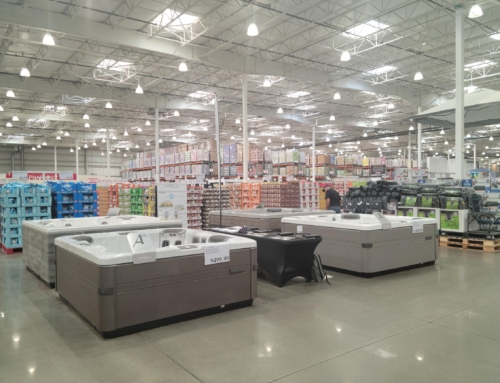The customer experience has undergone a drastic overhaul in recent years, and where it once ended when a customer walked out the door, today it is ongoing. Consumers are no longer satisfied with a great in-store experience or a quality product—they want to buy from brands that listen, answer their questions, and fix their problems. They want to buy from brands with which they can interact and feel a connection.
For this reason, retailers have shifted from a sales funnel that relies on promotion and in-store customer service to a more comprehensive system that involves online engagement and the customers themselves.
Understanding the True Meaning of Customer Engagement
Despite popular belief, online engagement goes beyond posting to Facebook on a weekly basis or sending out monthly emails with coupons attached. Customer engagement is about inspiring customers to interact and share in experiences you craft for them as a brand.
The best way you can generate customer engagement is to focus more on value creation than you do on revenue extraction.
The best way you can generate customer engagement is to focus more on value creation than you do on revenue extraction. When you provide your customers with informative and interactive content, real time support, and an overall stellar end-to-end customer experience, you will yield unparalleled results, including brand growth and customer loyalty. This guide details four strategies that you can use in your spa retail business to encourage interaction and build a loyal customer following.
Quizzes: A High Scoring Approach
According to a BuzzSumo study, 82% of social media users completed a quiz they were exposed to on their newsfeeds. While quizzes are a fun way for the average web browser to pass the time, they serve an important marketing function. They serve to generate leads.
Quizzes, when designed correctly, have the multi-faceted advantage of generating user engagement, earning shares, and collecting consumer data. Unlike surveys, which ask users to devote their time and attention without offering anything in return, quizzes allow brands to collect data on users in exchange for added value, which takes the form of fun and personalized results. Moreover, interactive content benefits from the fact that users never tire of learning new things about themselves. Whether the title of the quiz is “Which Disney princess are you?” or “In which state are you really supposed to live?” social media users are apt to click “Play” if they find themselves with a spare minute or two.
When devising your own winning quiz, make sure the subject is relevant to the quiz taker's life, does not come off as salesy, and offers something of value in exchange for his or her time.
As a spa retailer, you may want to know just what kind of quiz is bound to attract your ideal customer. It’s important that you keep the quiz to something that can be completed in just a few short minutes. If possible, make sure that the end result reveals something insightful about the player’s favorite subject: him or herself. Aqua Magazine provides some example questions that can be used to generate the real-time, personalized results your customers may desire:
- Do you enjoy relaxing by the water?
- What is your household income?
- About how big is your backyard?
- How do you feel about pool or spa upkeep?
- What is your price range for a hot tub?
- How soon would you like to be relaxing in hot tub?
When devising your own winning quiz, make sure the subject is relevant to the quiz taker’s life, does not come off as salesy, and offers something of value in exchange for his or her time.
Email: A Tried and True Method for Boosting Engagement Rates
Though many marketers were slow to adopt social media marketing as a part of their overall content strategy, when it became clear that platforms such as Facebook, Twitter, and Instagram weren’t going anywhere, hesitant marketers finally decided to adopt SMM. Today, roughly 83% of businesses consider social media to be important for their performance, which leaves many marketers wondering: is social media going to replace email? Further studies suggest no, such a happening is not even in the realm of possibility.
According to email marketing versus social media performance statistics, email continues to reign supreme as a marketing tool. Some surprising finds are as follows:
- For 58% of individuals, email is their first “online check” of the day, compared with just 11% for Facebook and 2% for Twitter.
- 77% of individuals prefer email for promotional messages, compared with just 4% who prefer Facebook.
- 44% of individuals check their email accounts for deals from brands they follow compared with just 4% who turn to Facebook first.
- Email is responsible for helping brands acquire an average 7% of customers, while Facebook acquisition rates are down 1%.
- The customer lifetime value of using email is +12%, compared with +1% for Facebook and -23% for Twitter.
These stats show us that email continues to produce some of the best engagement rates of any marketing strategy out there. Of course, there are certain things you can and should be doing to turn leads into paying customers, customers into repeat buyers, and repeat buyers into brand loyalists. VentureHarbour provides 15 ways for you to attract leads and move them closer to the sale destination, some of which are outlined below.
Don’t Negate the Power of Simplicity
According to countless studies, plain text emails continue to perform better than those with one or more images. In fact, the more images an email has, the more engagement goes down. Of course, it’s important to keep in mind that results vary based on whether a company is B2B or B2C, with B2B businesses seeing more results with plain text emails than B2C organizations.
Use Images Wisely
As a spa retailer, it can be difficult to promote your products without visuals. For this reason, you should know when and how to use images in your email campaigns.
Forego Wordy Design
One leading mattress brand uses simple yet bold text, a lot of white space, significant contrast, and minimal imagery to convey its point. The impact is nothing short of powerful.
Newsjacking Works
If there is a relevant industry-related news story, use it. While not always easy to pull off, if you can align your own marketing message with something that consumers can relate to and care about, the results may just surprise you.
Use Holidays to Your Advantage
More than half of online shopping related queries take place in the fourth quarter of every year, and approximately 8 out of 10 holiday shoppers are influenced by the internet before they make a purchase decision. One-third of all holiday shoppers report that holiday purchases were driven by online promotions. Take advantage of the holidays and ramp up your email marketing campaign to include references to public holidays and consumer events.
Speak to Consumers’ Desires
As a spa retailer, this is a trick you can deploy easily and over and over again. Hot tubs relieve muscle tension, increase blood flow, reduce stress, and promote healing. They also just feel good. For these reasons, it’s not difficult to convince leads they want a spa, but you may discover that you have a hard time convincing them that they need one.
You can convince leads of their needs by speaking to their most basic human desires. Owning a hot tub provides a means of escape, a place for couples and families to reconnect, and a way to relax in the comfort of one’s own home. These are all benefits that potential buyers can convince themselves they’ll enjoy for years to come.
Tell a Story
You don’t have to write a novel to appeal to your customers’ desires. All you need to do is write a single, captivating headline. Something simple like “Connect, Relax, Escape in the Comfort of Your Own Backyard. Find Your Hot Tub Today” can appeal to shoppers’ desires and fill their heads with visions of what could be.
Is Your Email Engagement Falling Flat?
When it comes to marketing, metrics matter. If you’re not measuring the success of your email marketing campaigns, you could be missing out on several opportunities for revenue. In addition to testing and re-testing the effectiveness of your campaign, Insights for Professionals provides tips for what you can be doing better to up your email marketing game:
- Keep it simple and to the point—people aren’t interested in reading large chunks of text.
- Use welcome emails as a way to introduce yourself and to get the conversation going.
- Optimize your emails for mobile to appeal to a larger audience.
- Don’t be afraid to use automation—it has its purpose!
- Segment your subscribers into different groups to make the most of your efforts.
- Master the art of the subject line to ensure your headlines are enticing yet honest.
- Don’t fall victim to bad stock photography, as subscribers will notice (and judge you for it).
Social Media: An Easy, Affordable, and Effective Way to Engage with Audiences
Social media may not be as effective as email marketing, but that does not mean that it is ineffective. Social media is a huge part of most people’s everyday lives, with the number of worldwide social media users at approximately 3.03 billion. Facebook alone has 2.72 billion active users, 76% of which check their accounts daily. Instagram, Twitter, and SnapChat are all competitive contenders as well.
Though users generally turn to social media to communicate with friends and family and find free entertainment, many use these platforms as their primary means of connecting with their favorite brands as well. For this reason, social media marketing provides several benefits, including but not limited to:
- The ability to grow your customer base and audience
- A way to spread brand awareness and boost your reputation
- A means via which to build rapport with followers
While the aforementioned benefits are reason enough to invest in a social media campaign, one of the greatest reasons to incorporate SMM into your marketing campaign is the sheer cost of doing so—or lack thereof. Social media marketing is inexpensive, and it is not uncommon for brands to market their companies on social media platforms without even realizing they’re doing so. Moreover, it is not uncommon for loyal followers to do the marketing on behalf of brands as they share, comment on and like posts.
In terms of affordability and ease, social media marketing is one of the best and most effective ways to generate customer engagement. Some ways to generate engagement via social media are as follows:
- Share quizzes!
- Host giveaways or contests.
- Share user generated content.
- Repurpose old content.
- Poll your audience. (Example: What would make the end of your work week better? A) A cold adult beverage, B) A relaxing soak in a hot tub, C) A good book or D) All of the above)
A Unified Retail Fix: Far More Sustainable than Band-Aid Solutions
Unfortunately, the marketing conversation in the retail sector is dominated by band-aid solutions. What is the next best app? How can retailers connect social with loyalty programs? How can they generate more sales while exerting as little time, effort, and money as possible? Oftentimes, the result of this kind of thinking leads retailers to engage their audiences with a singular approach, a method that is extremely transparent and therefore does not work.
Retailers must unify all customer-facing processes and make all aspects of the sales funnel appear to be one in the same.
If spa retailers wish to effectively engage their audiences, they need to better understand how their audiences use technology in their everyday lives and then use that technology to implant the retail brand as an essential part of users’ lifestyle. To do this effectively, retailers must unify all customer-facing processes and make all aspects of the sales funnel—consume, search, transact, and fulfill—appear to be one in the same. By removing the “salesy-ness” of these aspects, consumers are more apt to engage with brands at ALL levels of the funnel, and not just at the search level, thereby providing for a much more sustainable approach than piecemeal marketing.
Sustainable Marketing Focuses on Customer Engagement
To summarize, sustainable marketing efforts go beyond delivering a great in-person experience or a top-notch product. Customers want to feel a connection with the brands from which they buy at all levels of the sales cycle, a notion that is especially true when big money is on the line, much as it is in the spa industry. You can encourage customer interaction and build a loyal following by utilizing online quizzes, ramping up your email marketing efforts, turning to social media, and unifying all customer-facing processes.









Leave A Comment